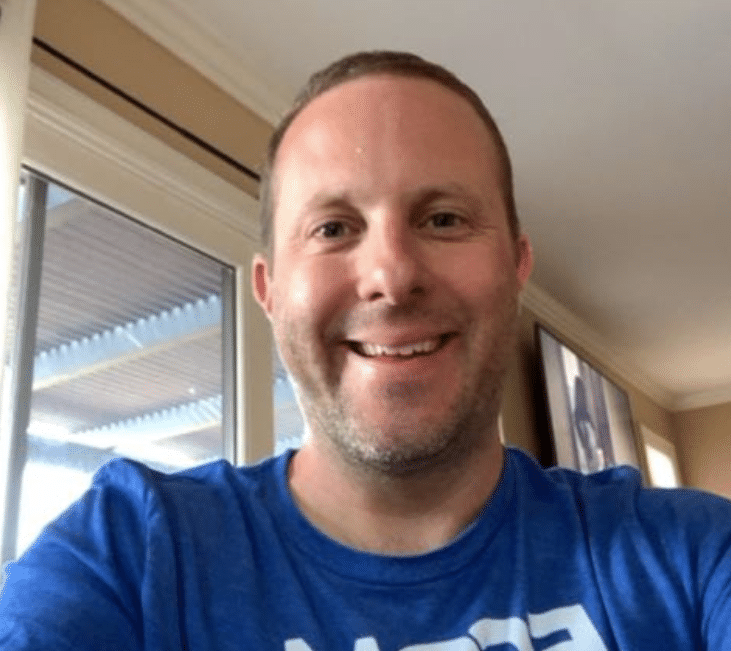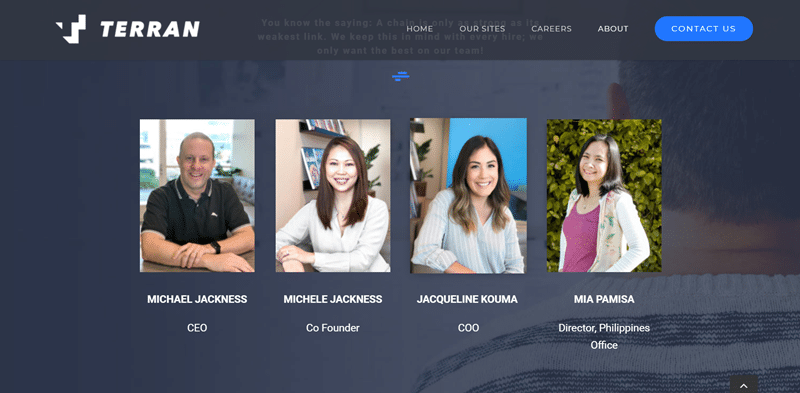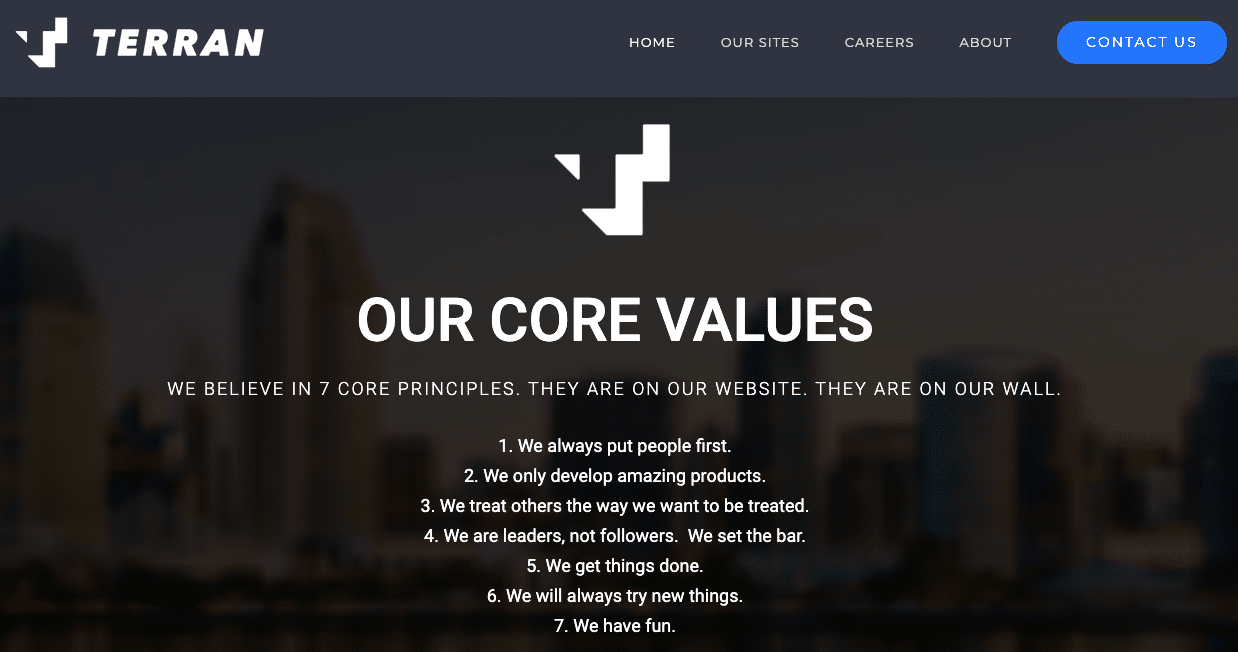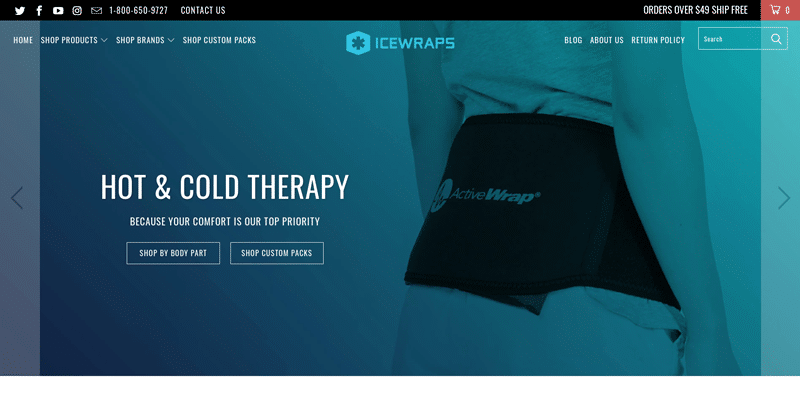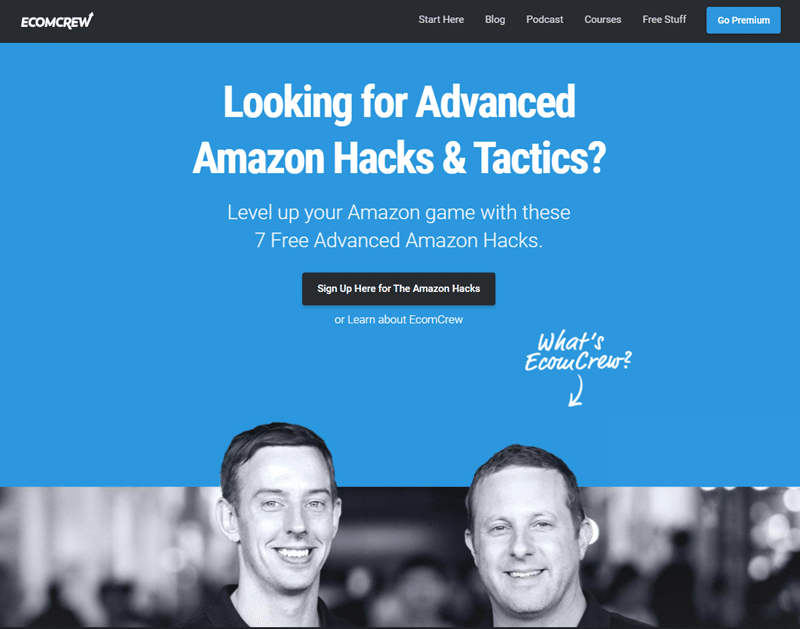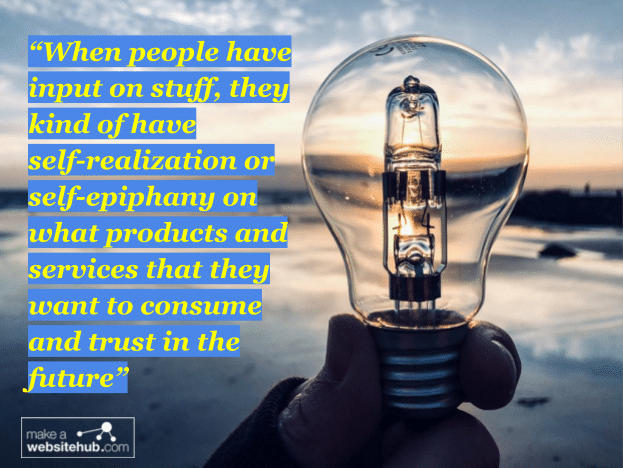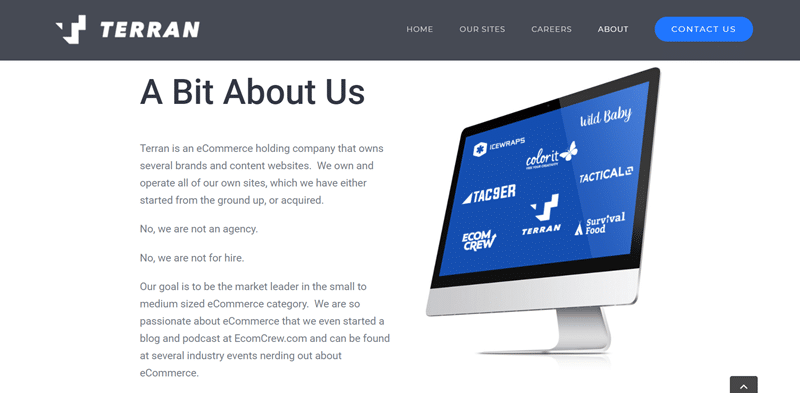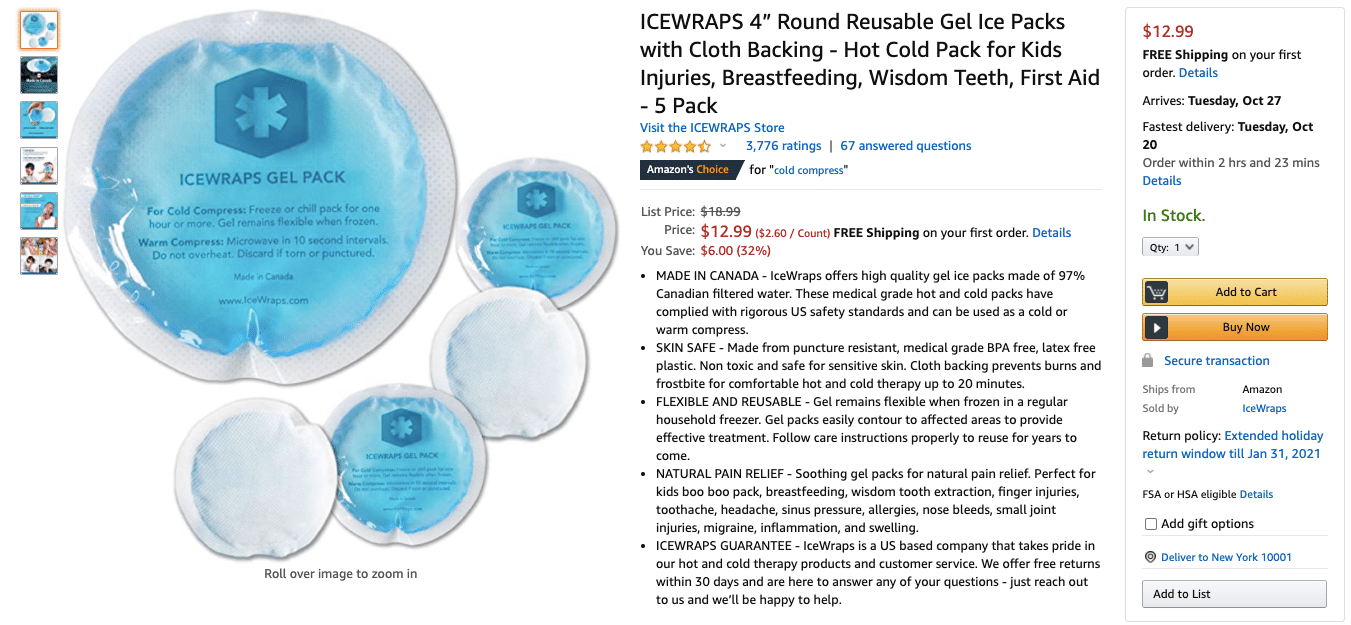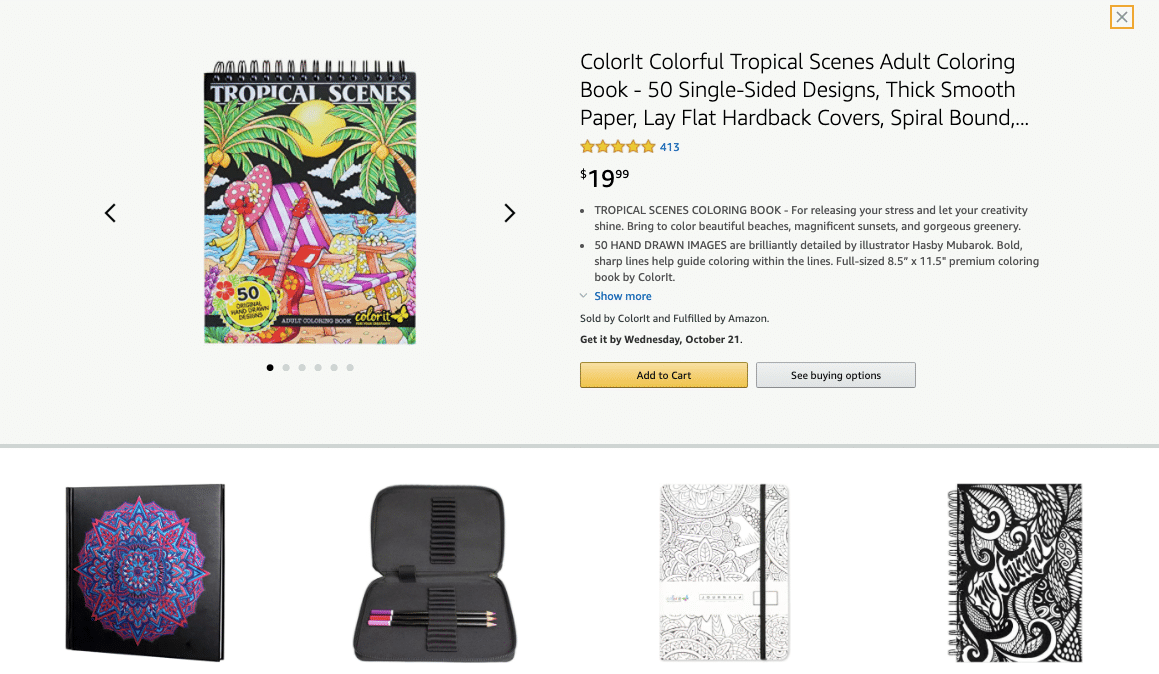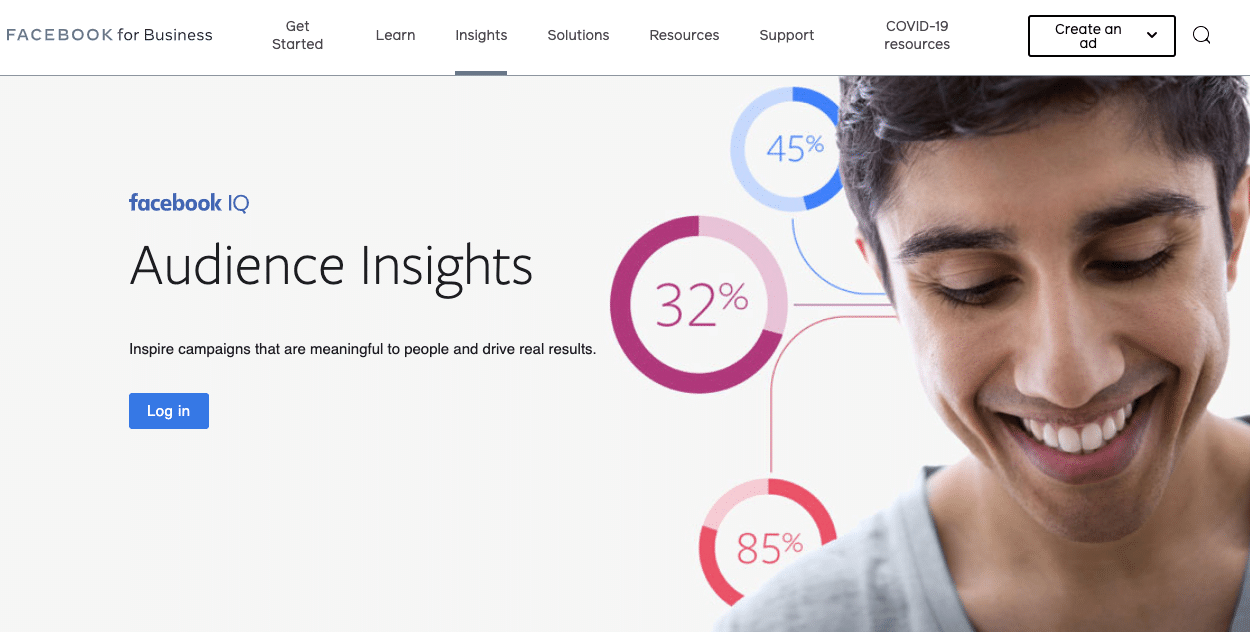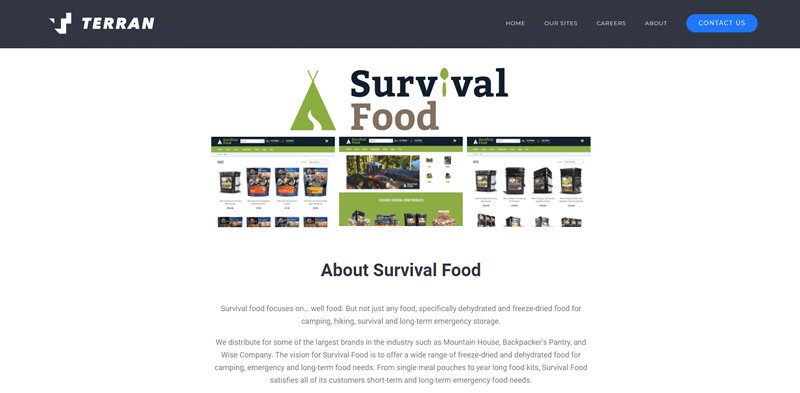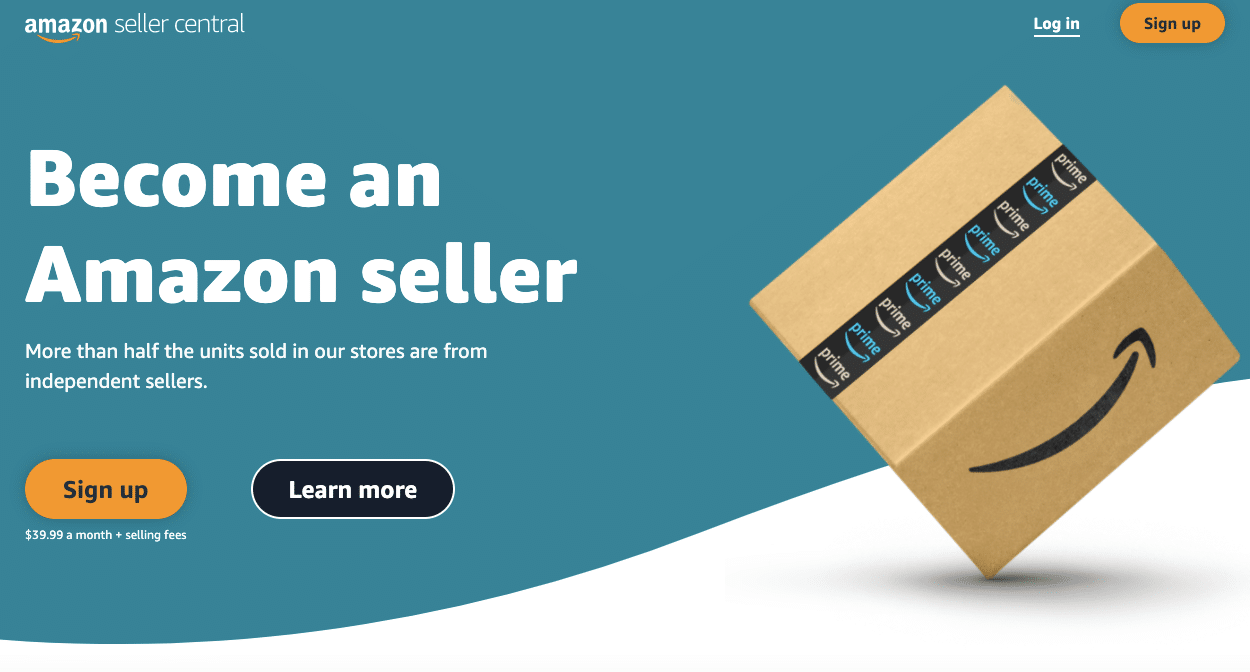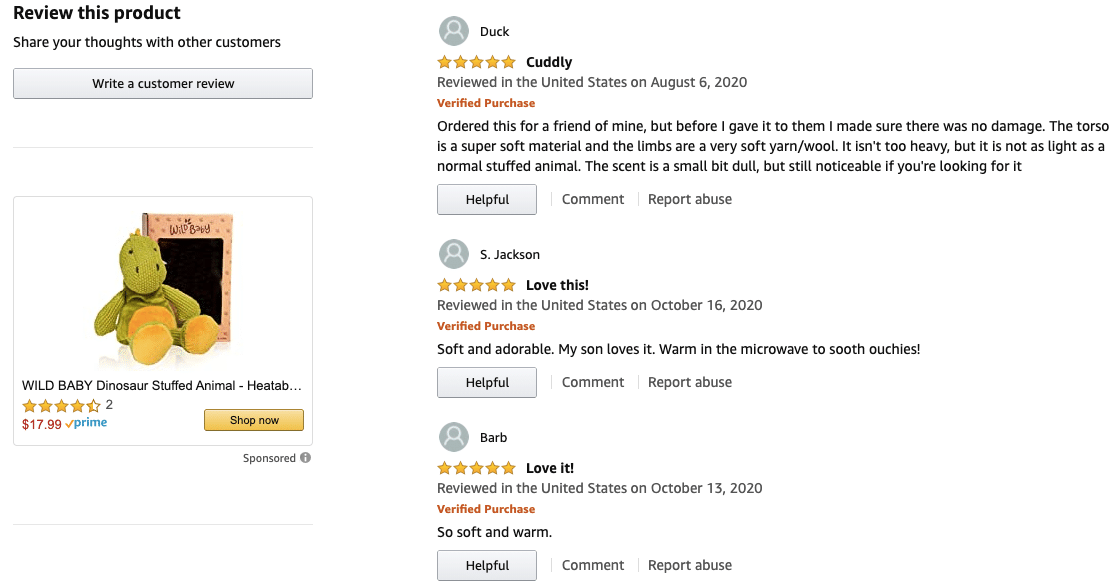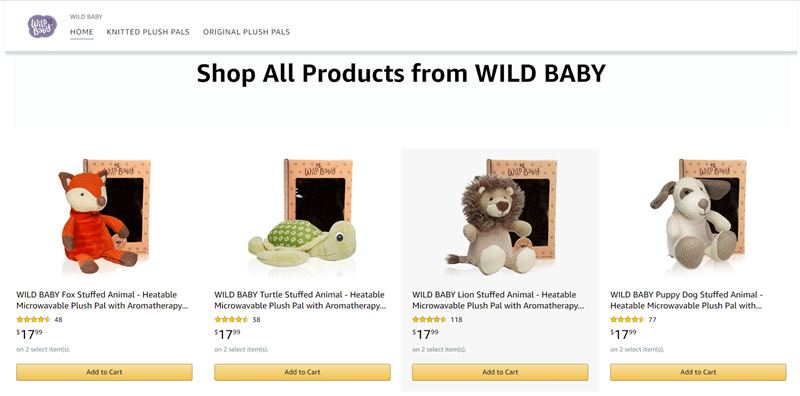Michael Jackness has sold millions of dollars worth of products on Amazon and through his websites. Michael sold one of his Amazon businesses, ColorIt, and acquired IceWraps for $50,000. Today, that new business is worth anywhere from $2 million to $2.5 million.
IceWraps is just one of Michael’s many successful products and websites.
In this interview, Michael offers insights into how he creates and launches tens of products that earn an average of 4.7 stars on Amazon from thousands of reviewers.
If you’re looking to sell on Amazon or design products that will blow your customers’ minds, this interview is from your future self. Pay attention to every word of it.
My Discussion with Michael Jackness
1. Hello, please introduce yourself
My name is Michael Jackness. I run an e-commerce conglomerate called Terran that sells various things online and document the entire process along the way on our blog and podcast called EcomCrew.
Before that, I was in IT and affiliate marketing. I got into eCommerce with the site treadmill.com in 2013 and haven’t looked back since.
2. Tell us about Terran. What does the name mean, and what personal experiences or realizations inspired you to start Terran?
The name Terran doesn’t really mean a whole lot. It was just us looking for a conglomerate name for a company. Some people ask if it came from StarCraft because there’s a race terran there, but actually, Terran means the human race. It’s hard to find a short one-word domain and just really loved the name Terran for that.
We’ve called our business Terran since 2012, actually. You know, just a short domain name. So, it’s always easy when you’re meeting new people to give them a short email address, but the name doesn’t really mean that much publicly.
Basically, our website gets hit mostly by people looking to get hired by us. We direct people there if we’re talking to investors or things like that. But we’re mostly known for the brands that we run and not for Terran.
3. You have 7 core values. The first is putting people first, and the third is treating others how you want to be treated. What’s the difference in these two values?
I think you putting people first kind of relates to our employees and just people in our orbit and our lives. So, it’s putting people before profit, putting people before the business and before the livelihood of that.
You’re always thinking about our employees first. How are things going to affect them? How are they going to receive things? Just kinda thinking about them first, and then the same thing would go for our customers as well.
I mean, we want to be thinking about them before necessarily the health of the business. The thing that’s cool about that is usually you get a lot more back in return. If you take care of people, they’ll take care of you. And then, treating others like you want to be treated, it’s a little bit different. But, obviously, it’s nice to be treated in a way that you’re being put first, but it goes way beyond that.
It sucks to be stolen from or to be misled, or these types of things. So, we don’t run our business in that way. And this goes over into my personal life as well.
If you’ve gotten to be as old as I am in my forties, unfortunately, you’ve had people treat you poorly, and it never feels good. So, we just try not to do the same in reverse.
We don’t need to steal from people to make money. Don’t need to mislead them, even if they’re the ones doing it to us. Whether they’re returning something and they’re saying that it’s defective or something’s wrong with it, and it really isn’t. We’re just going to treat them like we like to be treated. Give them the benefit of the doubt in almost every circumstance.
It’s really just how we’ve kind of chosen to run our business and our lives. And I think that it doesn’t always feel good because sometimes people continue to do these things to you, but hopefully, over time, karma and all those good things will work out in the end.
4. You own some really awesome websites Tactical, WildBaby, IceWraps, EcomCrew.com, and others. How do you choose a website or eCommerce business niche?
With Tactical specifically, the way that it kind of came about, we were domain investors, and we owned Tactical.com, and we also owned treadmill.com, and we also own cuttingboard.com. Those websites, those projects were born out of the fact that
Hey, we’re now in e-commerce, and we own this domain. Let’s go do something with it. And, we have these valuable properties. We can go, we can go do something with them.
That’s how those launched.
IceWraps launched because we actually sold trendmill.com, and we had an employee that was working for us full-time that I wanted to keep employed. So I basically bought a business for him to keep them employed and they go do something else.
That turned out to be one of the best decisions we’ve ever made, and unfortunately, the employee isn’t with us any longer. He ended up retiring because his wife is now working full-time, and he’s home with the kids. They have a special needs kid, so he was able to leave and go do that full-time.
EcomCrew was born out of the fact that early on, we realized that what we were doing was unique in the eCommerce space. And just in terms of how we’ve taken a technology-first approach to everything we’ve done and people who are maybe not as technically inclined, you kind of find what we do to be fascinating. So, we’ve documented the entire journey along the way.
What makes us unique is that we share all of our brands and our products and talk very openly about our successes and our failures. So, it’s been an interesting journey, and I’m glad that we started that.
5. Why “raging fans” and not raving fans? How do you turn your customers into raging fans?
I think that region is even past raving. That’s like another level higher. The goal is, again, I think — because of what we talked about earlier — because of our core values. If you can treat people well and provide great products, you can have raging fans.
While it might cost you money in the short term, if you’re evaluating, taking a return, or replacing a product, or doing something to make a situation right in the long term, these become raging fans, and raging fans tell others about you and what you’re doing. And that’s proved to be a really core part of our business model.
We put a lot of work into taking care of people and developing great products, and that’s kind of, now I won’t say it’s a secret sauce to our business because it isn’t so secret. But unfortunately, a lot of people might stay and don’t really execute upon it, or don’t really think about those components and just don’t do it and then wonder why they’re not necessarily successful in the long run.
Most of the product developments were obsessive. So we try to think about every angle of what the customer might want, even before they anticipated to develop the product.
We also do get a lot of input, you know? When you get to a point where you have a decent mailing list and fan base, you can ask them for their input. What colors would you like to see us develop next when we launch our new colored pencils or markers? What theme coloring book would you like to see when we launch our next book; let’s have a contest and vote on that. You know, here are ten pages out of our newest book coming up; which pages do you like? And which ones don’t you like? You know, things like this.
So, when people have input on stuff, they kind of have self-realization or self-epiphany on what products and services that they want to consume and trust in the future. And without even realizing it, they want to be consumers and fans and raging fans of your products because you’ve taken the time to ask them for their input and then actually executed on that.
It’s been a great combination for us, and it does take extra effort upfront. But the reality is that it saves way more money in the long run because instead of launching a bunch of dud products that nobody wants, we’re getting a lot of really great input from our customer base and steering things in that direction. And the off chance that we do launch something that doesn’t get all five-star reviews, we’ll reiterate and make the product better and relaunch it based on customer feedback. That’s that on the product side.
Then, on the customer service side, our customer service agents are basically directed to never say no. If a customer asks for something, we’re going to try to execute on that. And, no matter how stupid it is, no matter how outlandish it is, again, always giving them the benefit of the doubt.
We do keep notes. So if the customer’s asking for that stuff over and over again at some point, we’re going to kind of consider them to be a scam artist and put an end to it. But, the first go around, I mean, we’re going to do our best to give them the benefit of the doubt, not judge them.
You know, you never know the whole story, and you’re only getting a couple of sentence requests of, I want to return this. For the reason why, it’s hard to know all the circumstances of why they wanted that return. So, if you can turn that frown upside down, it can go a long way to building raging fans.
6. Do you acquire or build your websites or eCommerce products from scratch? Why?
We’ve actually done both, and we’ve had success with both. I mean, IceWraps.com, for instance, was one that we acquired, and ColorIt was one we started from scratch. Tactical, we started from scratch. We’re in the process right now of buying another business. So, again, we’ve done both.
I think it depends on what day you ask me which one’s better. There are definitely advantages to both. I feel like the advantage you get from buying a business is someone else has already taken the risk of launching that product or that service or whatever it might be. And if it ultimately didn’t work, their business never would have been for sale. So, if it was a failure, you’re skipping that part, and they’re demonstrating that they produced results over X period of time. And you’re buying a shortcut to that time, because if you were to start from scratch and try to catch up to them if it’s a five-year-old business.
Maybe you could do it in four with what they did in five, or maybe you could do it in three and a half, but you’re still shortcutting the time factor. And that’s worth a lot, you know. And if there are things that you feel like they haven’t done, and you can take the time that they’ve already invested and the risks that they’ve already invested and then layer on top the things that make you particularly successful, it can be a really good value to buy an existing business.
So, that’s the thesis that we had when we bought IceWraps, which we bought for $50,000, including all the inventory. Today, if we want to sell that business, it would be worth 2 million, maybe 2.2, 2.5, something like that, in that range, just a few years later.
I think it kind of demonstrates how you can leverage what someone else has already done and really build upon it. At the same time, if there’s something that you want to get into and it just doesn’t exist yet, then starting from the ground up can be a really good way to go, which is what we did with ColorIt. And we decided we wanted to sell coloring books and supplies geared towards adults, and that didn’t really exist or wasn’t for sale at that moment. So we started from scratch and made all the improvements in that niche that we wanted to and launched those products and became quite successful.
Then the third thing is just being at the right place at the right time or there being something in your arsenal that you want to take advantage of, and that’s how Tactical was born.
We already owned the domain name, Tactical.com. We had paid five figures for it. It’s an asset that was just kind of sitting there, somewhat collecting dust.
So we decided, hey, this is the time to launch Tactical.com. Now we have the knowledge in terms of how we’re going to have a business plan that’s going to make it worth the time and effort to develop this domain that will make it worth more and appreciate quicker than just letting it appreciate in a desk drawer because domain names continue to go up in value. But I feel like now we’ve accelerated the value of that domain name exponentially by putting the effort into it.
So those are kind of the different approaches that we’ve taken to starting from scratch or developing one or buying one that’s already developed.
7. What’s your product development process, and how do you align it with your goal to make your customers raging fans?
I kind of mentioned a few of those things. I mean, running a poll, for instance, a Facebook poll or doing it through email, whatever it might be, and just asking, like, what title would you like to see next as a for instance.
Again, it’s shocking how that can really develop a relationship and rapport with your fan base. It also kind of helps you prevent you from making a huge mistake. I mean, there were lots of titles that we thought would be the next great titles that we just ended up not developing because when we did a poll, and like nobody was interested in it.
They were interested in the blissful scenes, for instance, or Mondalez and things like that, which we maybe never would have developed. And, you know, lo and behold, those would become our best titles.
And I think they become our best titles because
- We listened to our audience.
- We create, again, the raging fan.
You create that anticipation of launching this product. They felt like they were a part of the process. So that helps quite a bit.
Another thing is, you’re trying to put yourself in your customer’s shoes. If you can think about our average customer with ColorIt, it was an older woman, a lot of times without a lot of money, a lot of times lonely, their family had died or moved away or whatever they were, just living on social security and looking to do something to kind of pass the time with. Versus maybe somebody who’s older and more affluent who might be playing pickleball with their friends or at the country club to be social.
These are people who are kind of on the other end of the spectrum. So trying to just identify with that and be empathetic to that situation, that’s when ColorIt live was born, and we do a weekly show where we would interact with our customers every week and really develop a relationship with them, give away prizes on there. We do a coloring contest every week and things of this nature for them to share their creations with the community. It really develops a relationship with people in a way that’s just really, really sticky and really, I think, helped us create those, those raging fans.
8. How do you profile your customers to know who really needs your products?
When you first get started, you’re guesstimating, right? I mean, we were off by quite a bit, you know. I thought that it was going to be, stay at home moms or definitely thought it was going to be women.
We had that part right, but we thought it would be maybe a little bit younger crowd, maybe actually a little more affluent crowd. We thought that because we were selling a coloring book or supplies that were two to four X the price of all of our competitors, that people who had money would be the ones buying our products. So you create an avatar. Kind of go through and do some research on what you think it might be. But over time, if you’re actually taking the time to listen to your customers, you’ll hear a lot of the same things come up over and over again, especially when we were doing the ColorIt live thing.
People would just be like, I can’t afford this right now, or I’m going to save up to buy this book with my social security check, or I’ve been lonely since my husband passed away; this is what I do to pass the time. When you hear these things come up over and over again, you can start to develop a profile from that.
Also, over time, as you get more customers, you can use Facebook audiences and run things through that and see. Facebook has a tool where you can take an audience, and it’ll show you the demographic breakdown of it. So, you need a decent amount of data in there before they show you this stuff because they don’t want to share personal data. But what they can do is share macro data with you, and macro data will show, “Oh, these are 65-year-old plus people. These are women. These are people who like the Ellen DeGeneres show, people that maybe drive a Volkswagen” You’ll get a lot of really weird cross-sections of data from people, and that helps you fine-tune your avatar and then fine-tune where you’re going to advertise and also fine-tune how you’re going to communicate with your customers. And it makes a really big difference
9. Why didn’t you build your products under one brand? Why have you chosen to create multiple brands across different product lines?
I mean, calling the brand Terran can be difficult to have a voice for people who are into coloring, people who are into a Tactical gear, people who have just had a baby, people who are in pain right now. There’s not a lot of overlap between those different things as a for instance. So it makes it difficult to be a one-catch-all thing for everybody.
So, by having ColorIt, and IceWraps, and WildBaby, and Tactical as separate brands and separate companies, even now, we can really fine-tune our voice to those customers. I mean, someone who is a right-wing gun owner, young, military-focused is going to be a very different avatar and person than someone than who is into coloring. That’s going to be an older woman.
Again, with all the things I talked about, it’s also gonna be very different than someone who’s buying a stuffed animal for their newborn kid, that’s probably going to be a younger woman, probably more fluent, just because they’re buying a higher-end stuffed animal that isn’t a need. People that are on the poor end of the spectrum don’t have money to buy those things. So you’re gonna talk to them very differently.
I think it’s important to have, in the case that we have, these different brands for those reasons. It also makes it easier to spin off a brand and sell one of them, which is also what we did. So instead of having to sell our entire company, Terran, we were able to sell ColorIt outside of those confines and then keep our other brands and then work on developing new ones. So I think, over time, it’ll be a cycle for us where one brand goes out, and we develop a new brand or buy a new brand to come into the system.
10. Why haven’t you launched your new website, SurvivalFood.com, and when do you plan to launch it?
Well, it won’t be us launching it because we actually have sold survivalfood.com.
It’s kind of an interesting story. We felt like Survival Food was a really good match to develop alongside Tactical. We had already written a bunch of Survival Food type articles on Tactical.com, and they were doing quite well.
I felt like Survival Food would be a really great niche to be in. But we just got an offer that we couldn’t refuse for the domain name right after we developed it.
So, we did actually develop it and launched it as a pretty rudimentary website. It was just more like, let’s get this thing up there and start letting it index and send some links to it that immediately got it ranking in the top 10 for survival food in terms of a Google search. Basically, within the week that happened, we got an offer from someone to buy the domain name. And when someone makes an offer that’s too good to refuse, it’s hard to say no. And so that’s what we did
11. As soon as I landed on Tactical.com, I got hooked. That’s interesting because I’m not so much of an outdoor person, but it still appealed to me. Do you have a content creation process that’s proven successful in engaging visitors across your businesses?
We do. We’ve actually written like a multi-thousand-word article that helped this on EcomCrew. I can share the link with you.
But, the basis of it is, when someone types a question into Google, we want to rank for that, and we want to be the number one result. And the way to do that is, when someone types in that question, to actually answer it.
We’ve all typed a question into Google, clicked on the number one result or the two or three or whatever it might be, and been frustrated as hell. Like I just wasted my time. This is a bunch of crap. It’s thin content, short content, just not well written, and your thought is like, how the hell did Google even get this thing ranking here, you know? Then you start having to go down the list to find the answer.
Our content team is directed to basically answer the question better than any other article ever has been read on the internet about this, so they don’t need to click back and keep looking.
So if you think about it from that perspective, if that’s the top of mind goal, it doesn’t set a word count limit on things; it doesn’t make your editorial process go after just SEO. You’re really legitimately trying to answer the question and better the world and better the internet by putting out the best quality content on that. And it’s resulted in a lot of amazing organic traffic for us already. I mean, Tactical.com is doing really well for how new it is and how much traffic it gets.
So, if we write an article about “what is the best fire starter,” for instance, Ferro rod, in order to do that job, we have to go out and buy like 10, 12, 15 Ferro rods off of Amazon, or from REI, or whatever it is, and actually test them and test them all in a fairly scientific way where we’re doing the same experiment over and over again, and tabulating these results and taking pictures and video of that whole process and putting together an article that really addresses the question of what is the best Ferro rod versus everyone else out there who doesn’t bother to actually buy the product; it’s too costly. They are just looking to get rankings. They can really care less. They just want to get results, so they’re taking the same pictures that are on Amazon, and putting them in their article and writing a one-paragraph BS summary about the product versus what we’re doing, is again going out of our way.
So when someone comes to this article that we’ve written about the subject, we’re going to answer the question in an overwhelming light, maybe too overwhelming. Maybe it’s too wordy, if anything, and has too much information. And some people don’t like to read, and we do things in the article to help with that as well, to kind of break things up into headings.
But the end result is we rank for best Ferro rod and best Tactical gloves and how to build a tarp shelter and how to build an underground bunker, all kinds of random Tactical related terms, because we started with this approach of writing the best damn article possible and answer the question, and that’s the process that we’ve done.
12. What advice would you give an eCommerce business owner whose business is only on Amazon but wants to transition to selling on their own websites and other platforms?
I think that starting on Amazon is the place to go. It keeps your business simple if you’re just getting started, and many people eventually evolve into this “I’m going to sell off Amazon” position that you just kind of mentioned.
So, my first thing to think about is, is now the time? Because what’s going to end up happening is you’re going to spend way more time and money and effort getting sales off Amazon than on Amazon.
You’re going to have to deal with fulfillment and returns and customer service and a bunch of things that you just take for granted that Amazon handles also including fulfillment. But eventually, your business is going to get to a size where you need to diversify and not have all your eggs in the Amazon basket.
So, my advice is to think about this months or even years before you want to get there, which is hard to do. You can do that by starting a content site, much like I was just talking about, to get traffic, to get eyeballs, to get attention before you start launching a website.
Often, the way that people do it is they launch their website, they have zero traffic or attention, and then they wonder why they get no sales.
So if you can do it in a way where you’re building an email list and building organic traffic rankings and providing good information. And then work on launching your online store, you’re going to be basically instantly successful and have almost a hundred percent chance of success versus when you launch to a crowd of crickets chirping and get no sales. It’s almost never successful. So we think about it from that perspective.
13. If you sell in competitive environments like Amazon, where loyalty to the platform is stronger than brand loyalty, how do you create brand loyalty?
I think a lot of things I already talked about are really important.
First of all, having a really quality product. Amazon doesn’t lie. At the end of the day, consumers don’t lie, I should say. So at the end of the day, you can only play black card games for so long.
If you have a really crappy product that is legitimately a one-star product, you can only flood Amazon with so many fake five star reviews. You can only send so much fake traffic and use so many super URLs. That stuff only works for so long. It just isn’t cost-efficient.
The more cost-efficient thing to do in my mind, again, thinking in the longer-term, is to develop a legitimately good five-star product or at least a 4.6 or 4.7 stars. Like, a five-star product on Amazon is basically darn near impossible, but a 4.7-star product is achievable.
A lot of our products are actually 4.7, 4.6 stars, 4.8 stars. And that doesn’t happen by accident anyway. It comes from doing another round of samples with the factory, and then maybe another round and another round.
- When you get the sample, the stitching could be a little bit better here.
- There could be a little bit more filling in this stuffed animal.
- There could be more gel inside this gel pack.
- The letters on these pens are a little hard to read; make them better.
This case doesn’t quite lay flat so design something that lays flat; all the kinds of things that can be done to make micro improvements to the product where a lot of people cut corners and just want to rush to get the product to market or think that it doesn’t matter.
The reality is it does matter because that little bit of difference is what makes you win over your competition. So we try to put the effort in at that stage to make the products that will naturally percolate to the top of search results and naturally get Amazon’s choice badges because they fit these criteria.
14. Here’s a quote from you, “You spend 1/3 of your life at work. If you aren’t excited about getting out of bed Monday – Friday, then it’s time to reevaluate!”
Now my question: Business can be challenging. What was once exciting might begin to feel stressful as it grows, how do you manage stress from growth, especially if you’ve made long term commitments that deny you the opportunity to take a break and change the course of your business?
It’s tough. I mean, I think that there’s a reason why people equate entrepreneurship and business ownership to a rollercoaster. There’s a lot of ups and downs and what you’re saying here definitely fits that.
I think a lot of it for me now, as we’re talking about this and in 2020, comes from the experience of being through this before. I’ve seen this pattern develop, so I think that trying to maintain a good work-life balance through all of this helps significantly, making sure you have a really good team in place.
I’m a really huge fan of the book traction, and that system has really helped our business over the last five years. Just be better organized and have better people in place.
Traction talks about how most entrepreneurs are visionary but not very good implementers—so having good implementers on the team that you can trust to do these, being the things that make you stressed or unhappy in your business.
I’ve really concentrated on making sure that those components are in place, and feeling really good about that stuff has helped significantly.
Everyone’s a little bit different, so you just gotta look at your pain points and the things that are causing strife in your life and try to make sure that you’re addressing them and not just ignoring them, because ignoring them will end up with you being unhappy.
15. IceWraps has done incredibly well on Amazon and has been there for more than five years. It has over 2,800 reviews and 4.7 stars out of 5. Your WildBaby listings have 4.5 to 4.8 out of 5 rates and Amazon’s Choice badges. ColorIt has the same pleasant results.
What specific actions did you take to achieve such astounding results with your Amazon listings?
Image Credit: Amazon
I think that it’s that same playbook I mentioned just kind of over and over again. I mean, the product development phase is super important. You mentioned other things, but customer service, as we talked about, is super important. If someone is unhappy with the product and wants a refund, and your stance is, F-you, it’s now not been 90 days, and our policy is 30 days.
Well, the chances that I’m leaving you a one-star review are pretty high. If their last interaction with you will be negative, they are giving you a one-star review, or you can just give them a refund and make them happy, even though it’s been 90 days.
And it’s kind of like; they’re taking advantage of you. At the very least, they’re probably not going to leave you a one-star review, and that certainly helps keep the star ratings high.
Another thing that’s really important is iteration. Not every product that we’ve launched has been a five-star product or four and a four and a half star product in version one. There are some products that were actually on version three, usually by the third version or the second version we had it right. But sometimes it takes a third version.
A good example is one of our clay ice packs. So, we thought we developed a really amazing product in version one, and it was a hot and cold old ice pack. And people were saying as they put it in the microwave, the thing was melting and leaking and all these different types of problems. Now we knew that it’s because they just weren’t following the instructions that were causing that problem. But we didn’t have people complaining about it being used as a cold pack.
So, what we actually just did is like we repackage the whole thing and relist it as, and marketed it only as a cold pack and not a hot and cold pack, because we just realized that there was too much trouble trying to market it as a, as a hot pack.
We’re just gonna let the other people that sold a similar product deal with those other problems. Because again, people aren’t going to follow the instructions on how to heat this thing properly. Then as we relaunched it, people were complaining, “Oh, this product sweats too much. It gets me wet because it’s really a cold product.
And when there’s humidity in the air, obviously, it just attracts water to it. And I end up getting soaking wet while I’m using this ice pack.” So for version three, we made a cover for the product, and that way, it absorbed the moisture and also helped with making a little bit of a barrier from the cold against your skin. Cause people were saying it was too cold.
Finally, people were also saying, for our neck pack, that “it just wasn’t quite long enough to like cover my shoulders.” So we added a couple of inches of length to it and then relaunched as a new product with all of these things addressed.
So, instead of having a three and a half star product that was only selling a couple of units per day, we now have a 4.7-star product that sells 50 units per day because we addressed the customer concerns. And, instead of crying in our beer about having to basically throw away all this legacy inventory, we just did what was right — fixed the problems and moved on.
And just donated the other inventory and now have a product that sells really well. In one or two days, we’ve made up for the cost of the old inventory we threw away by just the sales of, of what we’re selling now has done so well.
It just shows you that if you listen to your customers and continue to make improvements, you can get there. So I think where people fall short is they bury their head in the sand because they see that the product isn’t selling very well, or it’s not ranked very well, or they lash out at their customers,” what a moron.” I say that too privately, but instead of ignoring these quote-unquote morons when they’re saying the same thing over and over again, there is a way to address it.
It can be as simple as one of our products people were saying; it just doesn’t work. It doesn’t; the product is ineffective. I can’t figure out how to assemble it.
Well, instead of being upset that they couldn’t read the directions, which we spent a lot of time on, we made a video, and we put a sticker over top of the box. But you came and opened the box without looking at the sticker that says, before you opened this, watch this video, it will show you how to assemble it. Now we have a five-star product instead of a three and a half star product by making that one simple change.
So, just listen to your customer feedback and think of that as an opportunity every single time you get a review.
16. What’s one fascinating thing you’ve heard about your product?
I think the most fascinating thing I actually, unfortunately, kind of talked about the profile of our ColorIt customers. I personally found that very fascinating.
No one ever really told us that, but to me, I found it fascinating that there’s like this huge segment of people who don’t have a lot of money but are willing to spend. Like they’re frugal in every other aspect of their lives. They are cutting coupons, and they’re shopping at discount stores and really pinching to make every penny meet, but they’re willing to spend a little extra money on their hobby, on the one thing that brings them joy in our life.
These are not expensive purchases; we’re talking about a $25 coloring book. But it’s also a niche where there are $8 coloring books, and you have people saying, “I have to wait till my social security next month comes in until I can afford this $25 book”, or “I’m going to save for a couple of months to make this $25 purchase”. And, you know, it’s just something that I’ve come to appreciate because I’ve just been lucky in life and in business. I mean, I came from that background.
I certainly grew up in that environment, but you know, after 20 years of being relatively successful, I don’t think about a $25 purchase. Like, I mean, if $25 fell out of my pocket tomorrow, I’m okay. I wouldn’t even notice it. It would just be like any other day. I would just continue along versus, you know, people that if they lost $25, it would make a meaningful impact in their life.
So, it’s fascinating to me to see people be that happy with our products that they’re willing to make a purchase.
It makes me feel like we’ve done something really right.
We’ve really hit a chord somewhere. And it also, again, just makes me way more empathetic. Instead of constantly rushing to criticize or look down upon people who are less fortunate, it just makes me even that much more appreciative of what I have.
17. What new products will you be developing soon?
The lifeblood of an eCommerce business is new products. I think there’s a lifecycle these days of any product, you know. You’ll launch a product, and you’re in that test phase that’s going to be successful or a failure. And then, you know, the ones that become successful, there’s this curve, like you’re going up a mountain. Eventually, you hit the mountain top, and a lot of times, you come back down the other side.
The data of all successful products are available to everyone with tools like Helium 10 or Jungle Scout and all the different other tools out there. So everyone else is looking at the same data and coming after you, and you’re basically always a target on your back.
So, yeah, we’re constantly developing new products. Right now, we’re looking at developing some kids ice packs. We also have a postpartum ice pack that we’re working on. We’re actually going to be working on a Firestarter. We have a Firestarter, and we’re going to be developing a tarp shelter for Tactical. We have three new plush toys we’re launching this year for WildBaby.
We’re constantly launching new products across the board. We’ve just taken a little bit more calculated approach to it these days. We used to be in this ultra rushed mode of constantly. We gotta be like launching new products every month. We were looking at launching multiple products per month at one point.
We’ve scaled that back just to kind of take some risk off the table and grow a little bit more linearly than parabolically just to help with the sanity and the stress that you were talking about earlier.
But we’re definitely in the process of launching new products. And if you ask me the same question next year or the year after that, we’ll probably have the same answer. I’ll just be slightly different products.
___________________________________________
About Terran
Founded in 1984, Terran is an eCommerce conglomerate comprising brands like Tactical, WildBaby, IceWraps, and more.
The company prides itself on building high-quality products backed by second-to-none customer experience. They also run EcomCrew, a podcast and blog that specializes in eCommerce.

